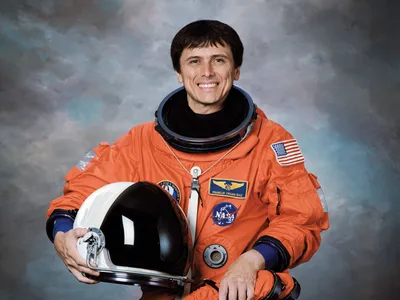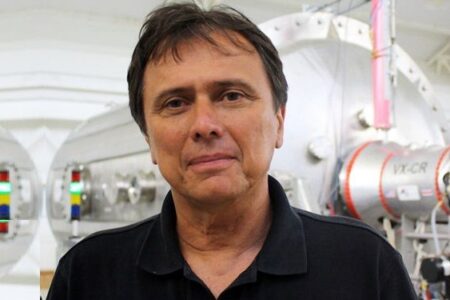
Share On Social!
In childhood, many of us gazed into the night sky to glimpse a shooting star and make a wish.
For Franklin Chang Diaz, he wished to explore the stars.
Chang Diaz would go on to do just that after becoming the first Latino American to go to space after he was selected by NASA in 1980.
Early Life of Chang Diaz
Franklin Chang Diaz was born on April 5, 1950, in San José, Costa Rica.
As a child he imagined himself being launched into space to explore the planets.
“Growing up in Costa Rica, Franklin Chang Díaz and his friends would put chairs sideways inside a big cardboard box in his backyard and pretend it was a rocket ship. Sitting with their backs to the ground, they would go through the countdown, imitate the launch procedures they’d heard about and, in their minds, visit other planets in search of monsters to discover and adventures to pursue,” according to told Time Magazine.
After graduating high school, his parents sent him to America in 1967 to live with relatives in Connecticut.
Coming to the United States not knowing any English, Chang Diaz enrolled in high school for an extra year to learn the language, still carrying the goal of going to space someday.
“It was a long shot, especially for a young kid from Latin America who didn’t speak English at the time,” Chang Diaz told Time Magazine in 2016.
With space still on his mind, Chang Diaz went on to enroll at the University of Connecticut, where he would earn a bachelor’s degree in mechanical engineering.
“That goal seemed to recede further when President Nixon cancelled the remaining Apollo missions in the early 1970s. As aerospace engineers at NASA were laid off and the space job market tightened, professors at UConn urged Chang Díaz to reconsider his plans. It was a wise move,” Time Magazine reported.
A Career with NASA for Chang Diaz
After receiving his doctorate in applied plasma physics from the Massachusetts Institute of Technology and becoming and United States citizen, it was time for Chang Diaz to finally apply to his dream job at NASA.
After being rejected the first time, Chang Diaz was selected by NASA.
He began his first mission in January in 1986 aboard the space shuttle, Columbia. Several months later, he would also be recognized by President Ronald Regan with the Medal of Liberty along with 11 others as part of a group of “remarkable naturalized citizens.”
Change Diaz would go on his second mission in 1989, and throughout his career build up a slew of accomplishments. These include a 2002 flight of the Endeavor, where Chang Diaz helped repair the robotic arm of the International Space Station.
Chang Diaz went on to complete a total of seven missions.
He logged more than 1,500 hours in space, including 19 hours during spacewalks, becoming one of the first scientists without a military background to regularly fly missions.
“When I first started, it was clear that being a scientist made you less likely to fly. But that didn’t seem right to me,” said Chang Diaz, according to APS.org. “Throughout my years in the astronaut corps, I think I helped bridge that gap. Obviously, both parts of the personality are important—having military discipline is just as important as having an inquisitive, formally trained, scientific mind. What I’ve done is prove that those qualities can fit together in one person.”
Chang Diaz and His Work Today
Chang Diaz also served as director of NASA’s Advanced Space Propulsion Laboratory at the Johnson Space Center until his retirement.

Following his retirement from NASA in 2005, Chang Diaz founded the Ad Astra Rocket Company (AARC), where he has continued to develop the Variable Specific Impulse Magnetoplasma Rocket, or VASIMR.
Chang Diaz first began developing the VASIMR as a student, focusing on the development of conceptual fusion reactors for commercial electricity production and worked on the engine concept over several years.
“The development of the VASIMR® engine was the foundation of the company and still is one of the primary projects however over the last 15 years, the company has taken on a larger mission. At the center of all our projects is the desire to help improve the human experience through innovative technology,” according to the AARC’s history webpage.
Chang Diaz hopes to contribute to a better future for humans.
“My dream or my vision is a future for humanity where we will be completely free to pursue activities outside of our planet. The Earth will then become sort of humanity’s national park, a protected area where our children and their children can all come back and know and enjoy the beauty of where their ancestors came from,” said Chang Diaz, according to APS.org.
To learn more about Chang Diaz’s development of VASIMR and AARC’s work, visit the company’s website.
By The Numbers
84
percent
of Latino parents support public funding for afterschool programs
This success story was produced by Salud America! with support from the Robert Wood Johnson Foundation.
The stories are intended for educational and informative purposes. References to specific policymakers, individuals, schools, policies, or companies have been included solely to advance these purposes and do not constitute an endorsement, sponsorship, or recommendation. Stories are based on and told by real community members and are the opinions and views of the individuals whose stories are told. Organization and activities described were not supported by Salud America! or the Robert Wood Johnson Foundation and do not necessarily represent the views of Salud America! or the Robert Wood Johnson Foundation.



